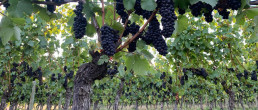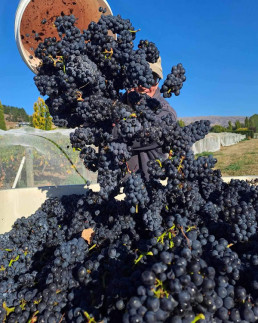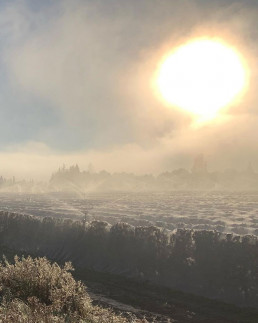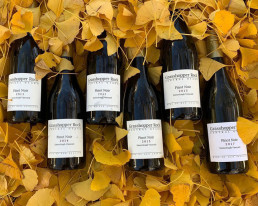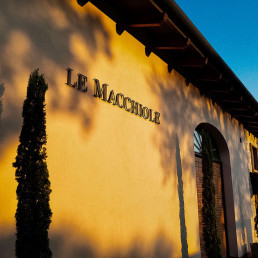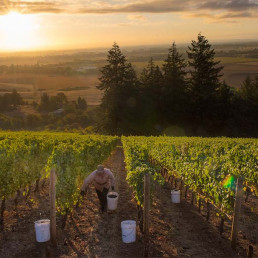Indulge us a little bit of kiwi patriotism this day. The 2024 Paris Olympics have just wrapped up and our wee nation at the bottom of the world (despite being missed off the world map at the closing ceremony…) did remarkably well, finishing third for ‘Medals per Capita’ behind only Dominica and Saint Lucia. But while our minds have been on Olympic Golds these past few weeks, it never takes our thoughts long to go back to where they belong… wine. And there’s one spot in New Zealand that’s golden in both history and reputation – Central Otago.
We are lucky to live in comparatively close proximity to Central Otago, affording us the privilege of knowing winemakers, winegrowers and experts in the region, which has fruitfully provided us with the newest addition to our Dhall & Nash stable, Grasshopper Rock.
“Grasshopper Rock produces one of Central Otago’s most consistently top pinot noirs”
Bob Campbell MW
Grasshopper Rock
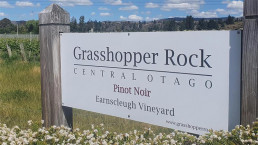
They may fly under the radar, their bottles may be absent from hip Insta profiles or splashy wine lists but ask anyone who really knows Central Otago, and they’ll tell you: Grasshopper Rock pinot is legendary!
“Previously defined by its power, Pinot Noir from Central Otago has become more elegant and nuanced.”
Anne Krebiehl MW Decanter (July, 2024)

Co-Proprietor Phil Handford was “Going for Gold” right from the start – Grasshopper Rock was established in 2003 after the founders – a group of friends, spearheaded by Phil Handford – set their visions on a prime piece of Central Otago land. They were four kiwi farming families with varying agricultural backgrounds who understood that vines weren’t the same as stock. “If it’s terrible farmland, you know it’s good wine land,” explains wine writer Amanda Barnes, “While cows and sheep like fertile soils and luscious green grass to graze on, vines do better when they have to struggle a bit.” So who better to know what land works well for than someone who knew what wouldn’t?
As tech icon Steve Jobs simply but inspirationally once said “Do one thing and do it really well“. And that’s exactly the path that Phil and the team have followed. The Grasshopper Rock pinot is built for pure pleasure for discerning Pinotphiles.
The Vision – was always to focus on a single vineyard Pinot Noir and to produce a wine which would, with time, be recognized as a unique expression of Pinot Noir that only this site can produce.
Grasshopper Rock is now known for its consistently elegant and age-worthy Pinot Noir
(Website)
Our wine knowledge was quite limited,” Phil admitted to Jamie Goode for the Wine Anorak, “but we had a clear vision. We wanted to do something like this, and do it really well. We made sure we got the right site, and we invested heavily in frost protection and got a full time vineyard manager which meant we could consistently achieve the right quality.” Ultimately this meant a crystal-clear focus on one grape, and one vineyard only: Pinot Noir from Earnscleugh Vineyard.
So what made this the right site? “Grand Cru sites only exist because of the determination of people to achieve great things. Our reason to plant vines was simply to grow great pinot noir” Phil explains. This uncompromising search for the right land led them to a small hill in Central Otago’s Alexandra sub-region.
Alexandra was the sub-region that excited them most, being the southernmost sub-region in Central Otago, (which also makes it the world’s southernmost pinot noir winegrowing sub-region!) Further to the east, away from the Southern Alps, than other sub-regions, makes this also the driest sub-region. Low rainfall is ideal for ripening pinot noir, but it does mean irrigation on the lighter soils is essential… but thankfully the historical gold rush has answers for this! This land was originally part of a larger parcel known since the 1860s as ‘Como Villa’ and has European history that dates back to the 1860s gold rush and the early establishment of grape vines in the 1870s. An old gold mining water race now brings water from the surrounding hills for much-needed irrigation and frost fighting.
Grasshopper Rock from Phil Handford on Vimeo.
The Alexandra sub-region is a large basin and its topography and location deliver both the highest and lowest temperatures in Central Otago, with extreme fluctuations never more evident than during summer and autumn, when the grapes are ripening.
On the south side of the basin, across the Clutha River from Alexandra township, are the warm north facing slopes, where you will find Grasshopper Rock on Earnscleugh Road.
“One of the things I admire the most about Grasshopper Rock Pinot Noir is that its owners are never in a rush to get their newest wine out to the market. It can be a costly exercise to hold wines back but, ultimately, it makes for wines that are smoother, rounder and ready to drink when they do eventually hit a shop shelf near us.”
– Joelle Thomson
Grasshopper Rock
Earnscleugh Vineyard Pinot Noir 2022
Tasting notes:
Dark purple with garnet hues. Perfumed with violets, blackberries, strawberry, hints of spice, chocolate and dried herb. A full silky entry with dark plum, dark cherry, florals and forest floor notes. Concentrated and complex with good minerality, ample fine-grained tannins and a persistent finish. Firm acid backbone which melds well with the dark fruit profile.
Winemaking notes:
The fruit (clones 5, 777, 114, 115, Abel and 667) was harvested from the 5th – 11th April 2022. The fruit was destemmed into tanks to undergo fermentation by a mix of selected and wild yeast with peak fermentation was 30°C. Total time on skins was approximately 20 days. The wine was aged in French Oak Barriques for approximately 10 months, of which 28% was new oak.
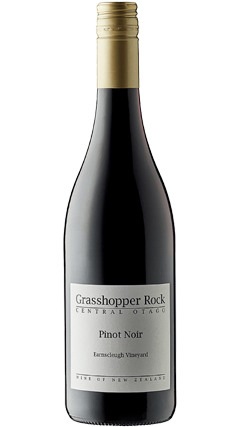
“This is probably the best value Pinot in the region.”
Jamie Goode’s the Wine Anorak
“Grasshopper Rock” Explained
The vineyard takes its name from a rare grasshopper, Sigaus childi, which is found only in Central Otago, and predominantly on the Earnscleugh gold tailings, which lie along the Clutha River, across the road from the vineyard. “We can’t claim to have made the acquaintance of the grasshopper, yet, but we felt that the name had a certain distinctive ring about it.”
And the ‘Rock’ alludes to the gold that is no longer in the tailings (and probably never was.)
The new gold is wine and we hope that you will find a little bit of gold in the pleasure you get from Grasshopper Rock.
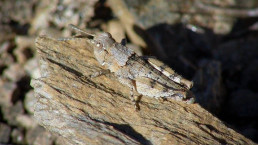
International Reputation - Central Otago Pinot on the World Stage
“The past 10 years has been nothing short of a Pinot Noir revolution. I know, because these are the wines that changed my life. A decade ago, I landed in the country as a wine-interested travel editor updating a guidebook series; by the time I returned home to New York, I’d decided to become a wine writer… The last leg on my trip was Central Otago, on New Zealand’s South Island, and that’s where I got hooked.”
– Erica Duecy for Vinepair
“Pinot Noir comes from three great places in the world. It comes from lots of ‘good’ ones, but three great ones. Home is Burgundy, in France… New Zealand does it real good, and the US, particularly Washington State, Oregon do it really good.”
– Tom Gilbey
“New Zealand is so well known for its Sauvignon Blanc wines that it is easy to overlook its Pinot Noir wines. That would be a mistake.”
– Per and Britt Karlsson for Forbes
“What do you get from New Zealand that the others just can’t give us? What we’re looking for in New Zealand Pinot Noir is something that’s a little bit more black fruit, and a little bit more richness and with a purity we don’t get from Burgundy. So from Burgundy we get this sort of earthiness, the mushrooms, and all the other things going on there. But New Zealand, we get purity of fruit.If you want pinot that gives you sort of a little bit of an electric shock, and then a hug, go to New Zealand.”
– Tom Gilbey
